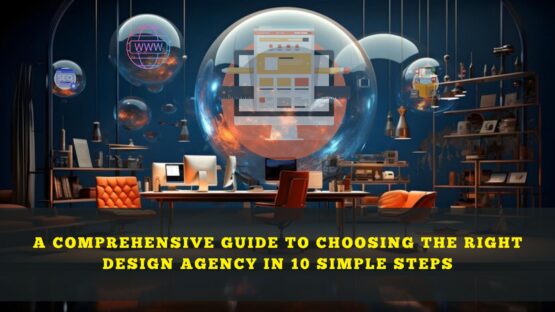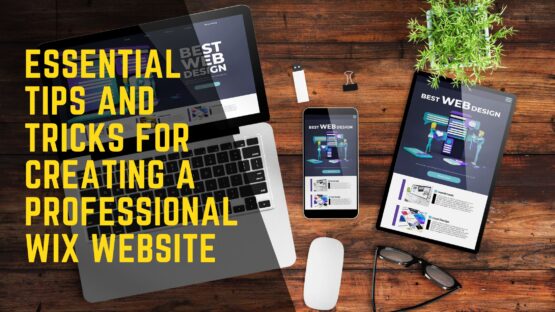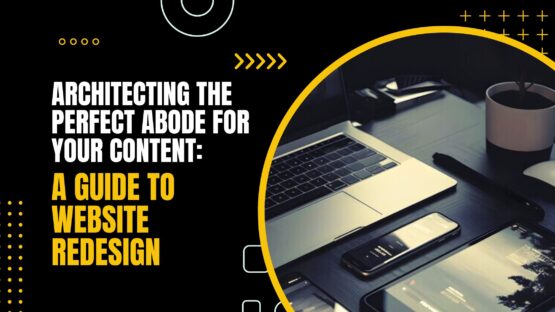In the ever-evolving landscape of digital aesthetics, staying ahead of the curve is paramount. As we look toward 2024, the world of web design is poised for exciting changes that will redefine the online experience. In this article, we’ll delve into the key web design trends set to shape the future, catering to the discerning needs of businesses.
As of 2023-2028, the demand for web design services in the US and UK continues to surge. In the US, the web design industry is valued at $42.2bn, with a year-over-year growth of 2.6%. Meanwhile, in the UK, London web design company services are experiencing a steady increase in demand, particularly in major cities like London. These statistics underscore the significance of staying informed about the latest trends and technologies within the web design sector.
Unveiling the Future: 10 Web Design Trends for 2024
1. Responsive and Inclusive Design for a Diverse Audience
- Accessibility Features: Prioritizing features like alternative text, keyboard navigation, and color contrast for an inclusive user experience.
- Responsive Design Techniques: Adapting layouts and content to various devices to ensure a seamless and consistent user journey.
2. Immersive User Experiences with Interactive Elements
- 3D Graphics and Augmented Reality: Integrating 3D visuals and AR elements to create engaging and immersive digital experiences.
- Interactive Microsites: Designing microsites with interactive elements to captivate users and enhance overall engagement.
3. Minimalist Aesthetics with Impactful Visual Elements
- Clean Design Principles: Embracing simplicity by focusing on essential elements for a clutter-free and visually impactful interface.
- Strategic Use of Negative Space: Leveraging negative space to guide user attention and enhance overall design aesthetics.
4. Artificial Intelligence Integration for Personalized Experiences
- AI-Driven Content Recommendations: Implementing AI algorithms to analyze user behavior and provide personalized content suggestions.
- Smart Chatbots: Enhancing user engagement with intelligent chatbots that offer dynamic and personalized interactions.
5. Dark Mode Dominance for Enhanced User Comfort
- User Choice: Offering users the option to switch to dark mode for improved readability and reduced eye strain.
- Energy-Efficient Design: Highlighting the potential energy-saving benefits of dark mode, especially for certain device types.
6. Sustainability in Design for Corporate Social Responsibility
- Eco-Friendly Hosting Solutions: Adopting hosting solutions with a focus on energy efficiency and reduced environmental impact.
- Carbon-Neutral Practices: Exploring sustainable design choices to minimize the carbon footprint associated with website development.
7. Microinteractions: Small Details, Big Impact
- Interactive Buttons and Elements: Implementing subtle animations and microinteractions for a more dynamic and engaging user interface.
- Feedback Loops: Providing instant feedback to users, confirming actions and contributing to a seamless user experience.
8. Voice User Interface (VUI) Optimization
- Voice Search Integration: Optimizing websites for voice search to cater to the growing popularity of voice-enabled devices.
- Conversational Interfaces: Creating interfaces that simulate natural conversations, enhancing the overall user experience.
9. Advanced Technologies Shaping the Future of Web Design
- Blockchain for Security: Exploring the integration of blockchain for enhanced security and transparent transactions.
- Progressive Web Apps (PWAs): Developing web applications for a seamless and app-like user experience.
10. Data-Driven Design Decisions for Tailored Experiences
- User Behavior Analysis: Utilizing data analytics to inform design decisions and create personalized user experiences.
- Dynamic Content Delivery: Designing websites that dynamically adjust content based on real-time user data.
11. Human-Centered Design for Enhanced User Interaction
- Persona-Driven Design: Creating detailed user personas to guide design decisions and ensure a user-centric approach.
- Usability Testing: Conducting usability tests to gather insights and refine designs based on user feedback.
12. Scrolling Animations for Engaging User Journeys
- Parallax Scrolling: Implementing parallax effects to create a sense of depth and engagement during user scrolling.
- Scroll-Triggered Animations: Introducing animations that are triggered by user scrolling, enhancing visual interest.
13. Dark Mode for UI/UX Comfort and Aesthetics
- Dark Mode Design Guidelines: Adapting UI elements for optimal visibility in dark mode, balancing aesthetics and readability.
- Theme Customization: Allowing users to customize the interface with light or dark mode based on personal preferences.
14. Minimalism in UI/UX Design for Simplicity
- Content-First Design: In UI/UX design prioritizing content and minimizing unnecessary elements for a clean and focused user experience.
- Simplified Navigation: Streamlining navigation menus and structures for intuitive and straightforward user journeys.
15. Dynamic Cursors for Interactive Feedback
- Cursor Feedback: Introducing dynamic cursor effects to provide users with visual feedback during interactions.
- Contextual Cursors: Adapting cursor styles based on the type of content or interaction, enhancing user guidance.
Conclusion: Navigating the Future of Digital Design
In conclusion, the amalgamation of these 15 trends spanning web, UI/UX, and interaction design promises an exciting and user-centric digital future. By embracing these trends, professionals can craft digital spaces that not only meet but exceed user expectations, ensuring a seamless and engaging online experience. In the rapidly evolving landscape of digital design, the convergence of web and UI/UX elements establishes a foundation for unparalleled online interactions in 2024 and beyond.




